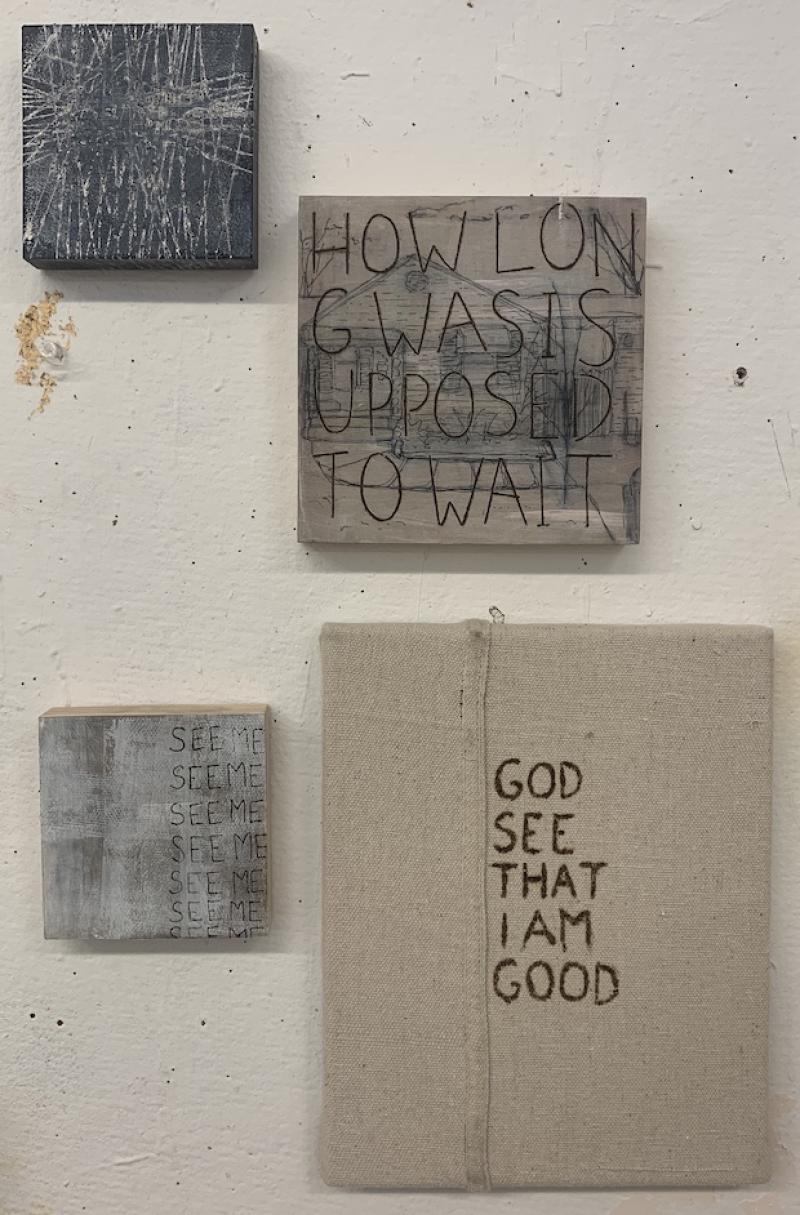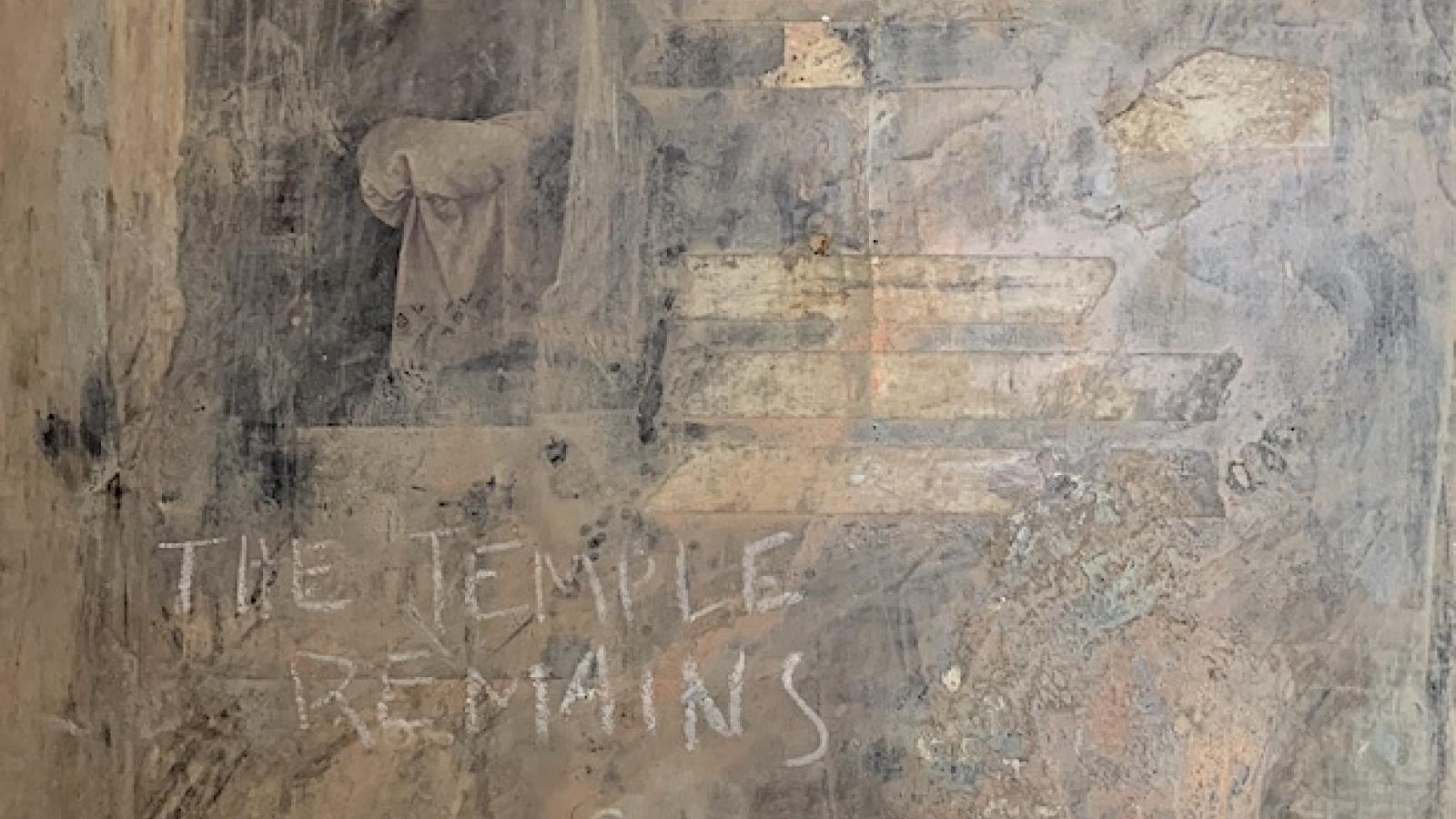Alex Burks - "The Creation of Man"
About the Artist:
Alex Burks is an artist from Pendleton, South Carolina. They will be graduating this summer with a BFA focused in painting and drawing. Their current body of work explores the reconciliation of religious trauma through the lens of their identity as a trans-masculine individual.
Instagram @alexolotlart
Untitled (Prayers #1-4)
Miixed Media, 2019

Dust to Dust
Mixed Media Collage on Found Wood Panel, 21 ¾” W x 59 ¾” H, 2020
Corinthians 6:19, mixed media collage on wood panel, 16” W x 20” H, 2020
Self Portrait (Holy Ghost), mixed media on found wood panel, 23 ½” W x 30 ½” H, 2020
For several years, my work has taken a great deal of inspiration from the psychological, using abstracted figures to delve into issues of mental illness and how they relate to one’s outward sense of identity. Two years ago, I openly came out as transgender. My most recent project “The Creation of Man” strives to push the boundaries on both of these themes. Ranging from small scale paper works, to larger, more sculptural paintings, this body of work reflects on transformation of self by means of material exploration, texture, and poetic text. The work, as a whole, has been a means of giving form to processing and learning to reconcile my personal and collective identity in the context of my queer politics and religious trauma.
Through repetitive layering and removal of materials, I seek to describe the body with as little representation as possible, evoking the feeling of flesh without use of a depicted figure. This detached approach to the figure mirrors that of my own relationship with my body, and the dissociation I felt and continue to feel due to dysphoria. There is a violence in the construction of these works, much like there is a violence in the reconstruction of a body.
The use of found materials further complicates the narrative. These objects carry with them an implicit history of their construction and lifespan up until I acquired them. I do not deny what these once were, but rather embrace it, working with the marks and textures they bring with them when deciding on their new from. Their past is no more or less important to the story they present to the world than their current state. Many of these objects were once parts of a larger whole. Some, such as the dresser top that now exists as “Dust to Dust,” have been obtained from furniture that I took apart myself. With their past uses in the home, these surfaces bring with them the weight and wear of domestic life. Repurposing them to my own desires is almost like an act of rejecting those traditions placed on me by my birth sex. One could make the argument that by stripping them of their intended purpose, I have lessened their value or made them useless. I choose to look at it as a reclamation, similar to that of my denunciation of my female body and its intended functions. This is not a death that we are witnessing but, instead, a rebirth.

